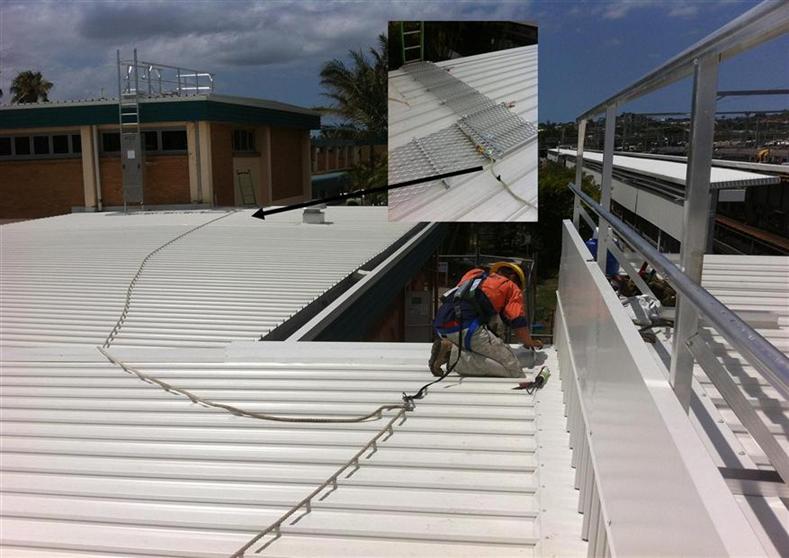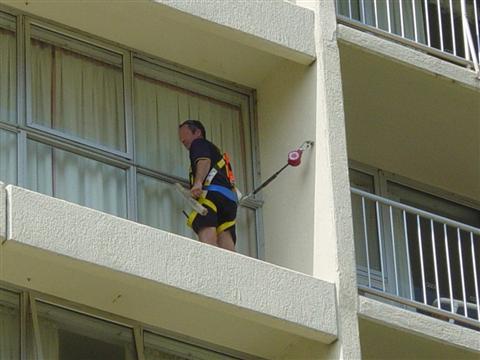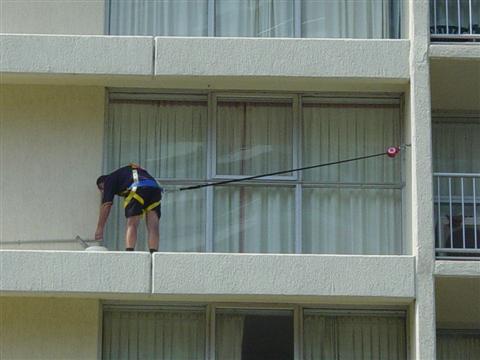
Even with the industry standard training, Australian Standards approved height safety equipment and certified fall arrest anchor points, some people stilln find it hard to Work Safe at Heights.
On this roof there are certified anchor points installed for working at heights. The anchor points were positioned to allow persons working on the roof to safely access areas where a risk of a fall exists. However, in this case, the contractor has chosen to connect his adjustable rope lanyard by wrapping it around the aluminium walkway. The walkway is held down by 5mm rivets to the roof sheeting and most certainly not designed or rated forn fall-arrest which requires a 15kN (1500kg) rating.
Further to the poor choice of anchor the position of the contractor in relation to the anchor point would mean that if he fell from the edge that he is working from, he would have exposed himself to a pendulum swing that in this case (a single story building) the system would have not have caught him before he hit the ground.
Height Dynamics recommends that at all times the anchor point should be directly behind the worker when at a leading edge, and that the rope system be adjusted in such a way that it is tight enough to limit the likelihood of a fall occur.
In this series of photos the contractor appears to be connected to the anchor in an appropriate way. Closer inspection shows that the contractor is not connected to the fall arrest point on his harness. In this case he has chosen to attach his lanyard to the side D which is only rated for work positioning which is designed to be used in conjunction with a polestrap connected to both side D,s such as a linesman would do. The anchor point does not appear to be tagged which is a requirement under the standard.
 |
 |
The next photo shows him exposed to a large pendulum fall which may result in a severe impact against the column below. Of greater concern is that there is a high likely hood of the webbing lanyard being cut as a result of a swinging fall past the rough edge of the concrete ledge. Not only was he placing himself at the risk of a dangerous fall the window cleaner was working alone.
The current Workplace Health and Safety Act legislates that if there is a risk of falls from heights a documented and practised rescue plan must be inn place. A CONSCIOUS PERSON HANGING IN A HARNESS IS AT RISK OF DYING FROM CIRCULATORY COMPLICATIONS WITHIN 15 MINUTES.
